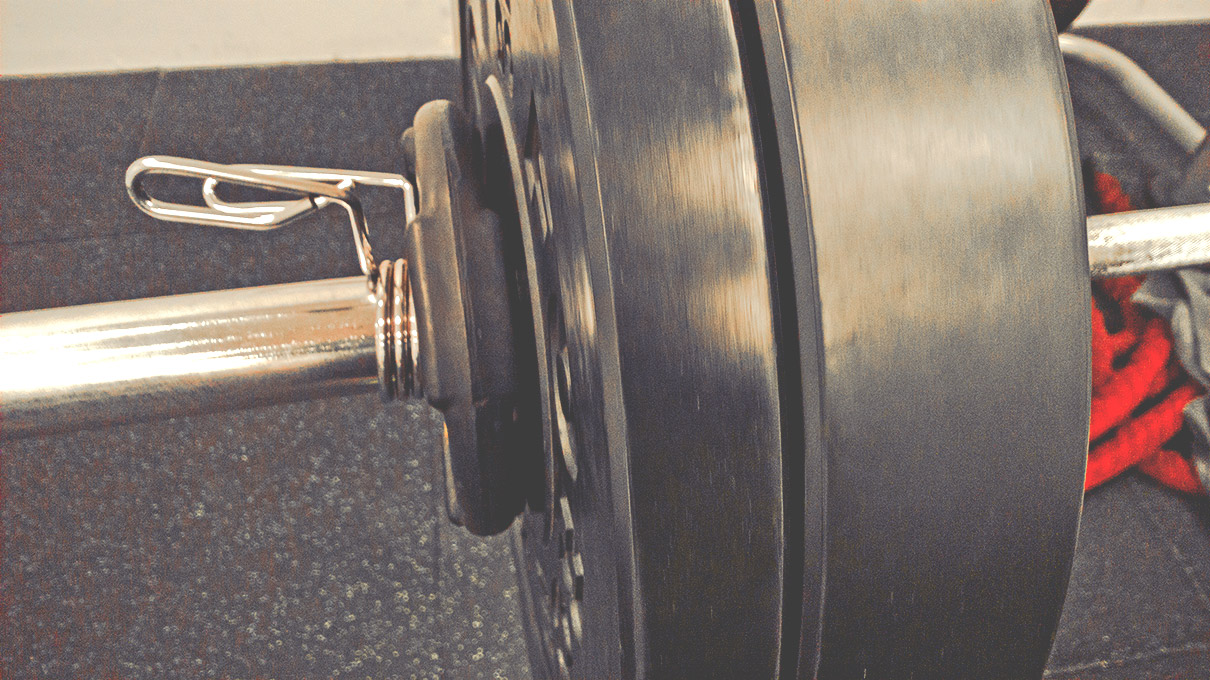
Fasting. Authentication. Inquire. Repeat
Cliff
This is the second part of my 2017 Keto anniversary feature write up.- This feature writing is entirely off my own personal viewpoint, perspective and thought(s) and may, subject to varying context(s) - introduce its own terminology(s) and/or themes readers may not readily be familiar with. Hence timely readership is well appreciated.
- This is an archived post which may or may not have undergone further editing for readership accessibility.
On the first part I have discussed my overall thoughts on this second year of intervention. In this section I will discuss:
- The Carb Refeed
- Context & Reception.
- Refeed Type 1/2 - 48 hour Standard
- Refeed Type 2/2 - Delayed Refeed (40 hours)
- Training & Injuries.
- Training philosophy
- Thoughts on Cardio / importance of mineral levels
- About me / my average stats
- Training Samples / how hard do I train?
- Supplementation - Training
- Preworkout
- Intraworkout
- Postworkout
- What I no longer take
- Supplementation - for SKD days
- The crucial, the conditionally essential and not so essential
- Betaine HCL
- Vitamins and micronutrients
- Minerals
- NOOTROPICS
- Pre/Post/Intra Workout supplementations
- Should you worry about Cravings or "Guilt"?
- Pedestrian Normalcy and their frivolous ecosystem of obligations
You are reading someone else’s in-depth account/s upon nutritional & life intervention/s spanning across ONE YEAR; covering everything from psychology, supplementation and fitness training principles. This is NOT a light reading. Don’t like it? Then go somewhere else.
Refeeds - Current Context, and Sentiment.
There is seemingly every reason justifiable; that CKD as the conservative protocol of refeeds is "meant" to be downright complicated, structured and extremely regimented. It seems intimidating that this is rightfully reserved for elitists. In some truth, yes. But eventually at some stage, it is a matter of ownership no matter who you are. "Fitness Competitors", Bodybuilders included are just "labels".
I will nonetheless share for all with what "I have done" instead. Of course this does not constitute nor permit as actionables over pre existing clinical supervisions.
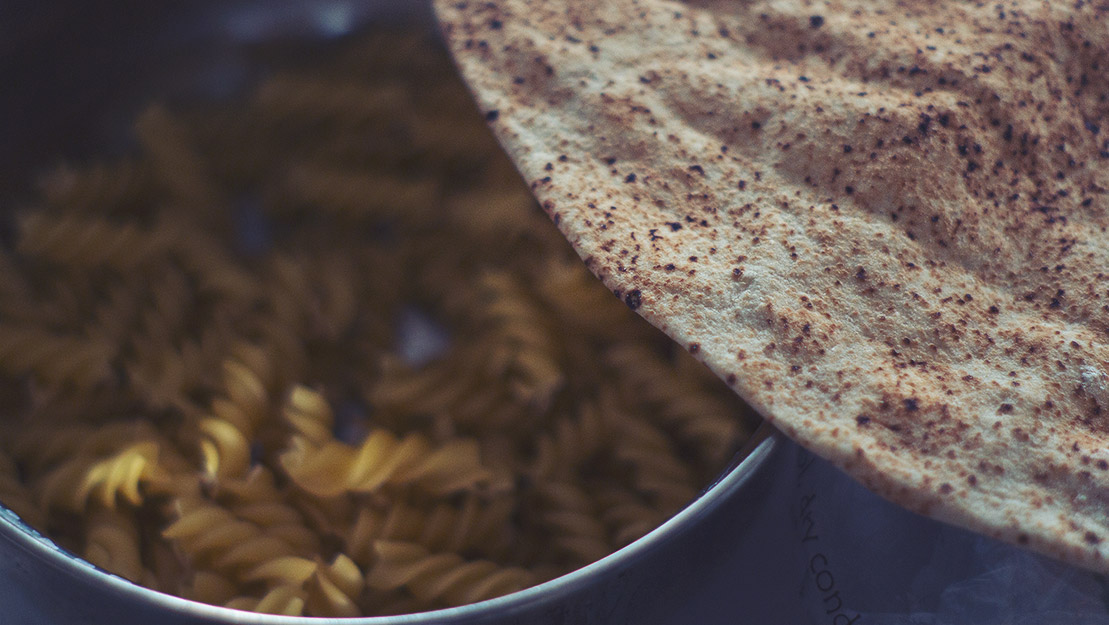
CKD Refeed Type 1/2
My Standard refeed - 48 hours Saturday from rising to Sunday bedtime.
^ The above header says it all. What you think it is pretty much equates logistically to what it pretty much means. This method; many tangents are not in line as per what the conservative method suggest. Conservatively; refeeds are said to be taken place right "best" after your last and final - workout for the SKD week. In this case, Friday evening PM. This effectively begins your re-feeding window provided that your depletion training finishes on Friday evening but expected to CEASE refeeding strictly from 6PM onwards on Sunday evening.
This approach is somewhat not intuitively timed as specifically according to my physiology; both my profiling and intuition. My own ideal markers for such an re-feed relies solely upon how SOON my physiological hunger, degree of insulin sensitivity, glycogen loading capacity allow themselves to naturally rise altogether as a cohesive response.
I can be insulin sensitive despite at times I am also not feeling overly hungry. I can also be hungry whilst not knowing I am also at times - insulin resistant. Is it a safe bet therefore to just WASH it all down with waves upon waves of carbohydrates and sugary cereals postworkout immediately; IRRESPECTIVE of the hormonal profiling anyway or anyhow?
No. Pragmatically, that is against my metabolic intuition. Because I just simply don't feel everything in my body to yet orchestrate itself readily enough - for such a big refeed event.
Consider me a wildcard, but throughout this entire year (yes, almost 365 days per year) - I HAVE HAD NOT A SINGLE craving of carb-laden cereals with milk + dextrose even after hip/knee-splittingly painful training sessions.
So, when or how exactly should I know to refeed; according to my case and current profiling? The very next day upon sunrise. From here onwards I eat and refeed carbohydrates in the order of types from sunrise to evenings - more simpler source of carbohydrates (including Palatinose; that being my preferred supplemental source or simply Dextrose Monohydrates) on rice cereals, milks, whey proteins and then easing down to wholefoods and starches later throughout afternoons and nights.
CKD Refeed Type 2/2
Delayed Refeed - Saturday from early afternoons to Sunday bedtime.
Despite rare occurrences (though still happens) - whenever I felt somewhat still dull or hesitant to begin full refeed, this is where delayed refeeding comes in. Besides from starting my morning regiment no differently to any other SKD weekdays (1/2 glass of water with 2 teaspoons of MSM and 70MG ALCAR and fish oil) - my first meal being breakfast is simply a higher protein, lower fat meal with some fibre supplementation (Pysllium Husk*). Whilst still keeping somewhat at a caloric deficit.
(*See Part 3/3 for my thoughts on Fruits and Fibres. TL;DR you eat a lot of fibre supplement? Consider periodising on/off heavy intakes)
Assuming that this meal is also accompanied with plenty of fluid calories (eg. another protein shake) - these should last me well until around one PM. By then - I would be feeling more or less ready for my refeed. Depending on the season (see next below) - on hotter seasons - my first meal begins with rice cereals, some flavoured whey and milk; whilst on other cooler seasons favouring the good old "bro-foods" oats, milk and whey. Although from here onwards, one must take care to never overindulge on protein intakes.
Periodisations between such higher vs lower intakes during refeed days; whether Delayed Or Standard versions of refeed types - I feel - is nevertheless necessary. However on average, I would be more inclined to err on the lighter intake of proteins. For those who insisted on higher protein days I would highly advise the importance of taking digestive aids.
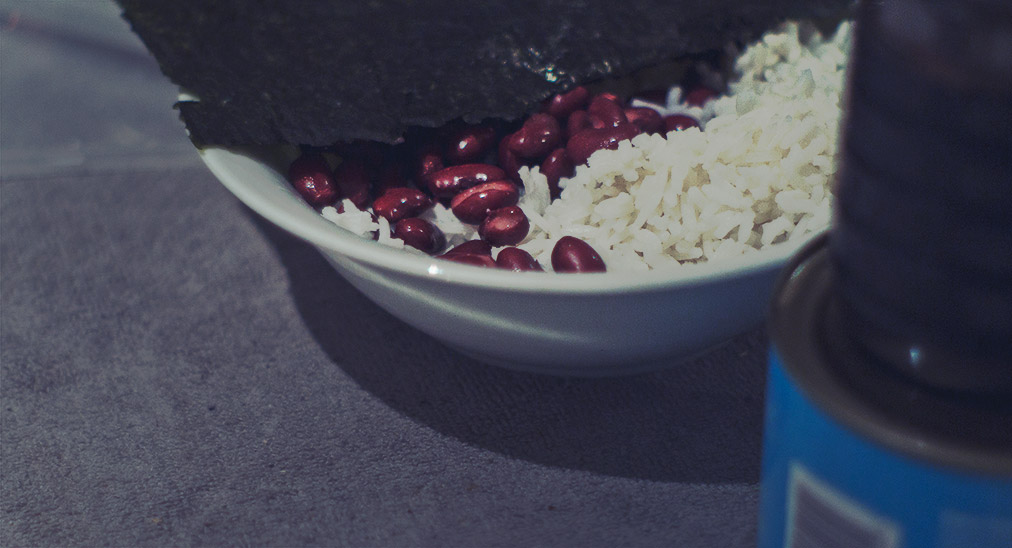
Refeeds Versus Cheats. Strict versus Loose. Solid Foods Versus Liquid Foods.
There are some sensitive debates surrounding misinterpretations between what refeed days are compared to cheat days. Or how strict (less fat, conservatively "cleaner" dietary carbohydrates) should one sets out their refeed strategy per week versus how loose (more fat, more readily-processed dietary carbohydrates).
I have done both loose (higher fats & carb ratios) as well as stricter (lower fats) refeeds. Usually, my macros during each refeed day is at least TWICE my deficit SKD calories (up to 4000 calories). This (SKD deficit calories) is anywhere between 1900/ or even at times below 1800 calories.
Each refeed day comprises of up to 600 grams of carbs, up to 230g of proteins, and usually no more - than 70 grams of fats.
Each climate / seasons also both dictate and impose, from my experience - digestive preferences between Solid Foods VS Liquid based Foods. "Solids" I mean / refer to as food that are whollistically just that - "solid" foods - starches, potatoes, rice, oats and other wholefood sources. "Liquids" I refer to are more or less - supplementary forms - for example - glucose syrups, with palatinose / dextrose powders, whey protein powders and low-fat dairy or non-dairy milks.
My meal preferences during colder seasons more often than not gravitates towards more solid foods on many meals (including inbetween meal/s). Where as during summers and warmer seasons - I prefer something "easier" and quicker to down. Hence that'd be easily more liquid foods; such as standard whey proteins with milk and only on occassional - fruits and fructose intakes (more on this on Part 3).

Training on CKD intervention
Since 2016 my 6x6 training philosophy of moderate intensity load but limited rests across up to ten (10) exercises in one hour remains my fixed, unchanged regiment for all my four (4) training days per week. Mondays, Tuesdays, Thursdays and Fridays.
...And how do I feel so far? I feel in many ways improved and strengthened than of last year's. Yet Despite also unfortunately; some lingering uncertainties persist to this day - that I am still unable to deadflift properly. This was due to my prior L5/S1 breakage episodes; effectively still somewhat preventing me from doing many compound and isolation exercises (including machines) - such as lying leg curls, conventional + sumo + hybrid deadlifts, and even smith-machine lunges.
I am beginning to realise despite above problems ~ the importance for realising metabolic and physiological effects of climatic/seasonal transitions; between hot/cold (and vice versa).
Cardio + Heat Exposures = mineral losses.
From my experience - Cardio is both an (emotional) blessing yet also (metabolically) a curse; depending on how and when it is utilised throughout the year. Or should I say rather - knowing exactly when and where - and in what amounts to increase or decrease - as accordingly to my exposure upon various climatic & seasonal transitions from hot/cold (and vice versa).
My experiences dictate that during colder seasons, I felt as though it is somewhat EASIER to retain mineral content compared to the much hotter (and drier here; in Australian) climates. Hence, I found myself willingly able to do more cardio during winters than I do during summers.
One unchanged concern underlying all of this is the need for mineral retentions. Salt, magnesium, potassium, zinc and amongst other trace minerals. The more you exert (energy expenditure) and lose water (perspiration, urination & gut emptying) from one hour to the next - such mineral depletion events MUST NEVER be ignored.
My advice for all who partakes in any ketogenic regiments in LABOUR-like employment settings - is to seriously consider moderating cardio exercises. Reduce whenever you feel as necessary, and only re-introduce in however succinct amounts at-a-time as necessary for as long as you can withstand your RESISTANCE training WITHOUT mineral loss symptoms. Consider periodizing on/off periods between implementing cardios into your resistance training and see where your tolerance lies for accomodating / MAINTAINING both anaerobic and aerobic performances.
Symptoms of mineral depletions can range anything from lightheadedness, general fatigue, heart palpitations, chest heaviness, feelings of unease, inability to digest foods (yes, betaine HCL + pepsin is implicated for mineral utilisation). These may not be pronounced during the early one or two days of climatic transitionary period hot-cold / cold-hot seasons.
Regardless my hunch suggests if you already are somewhat lean (at or below 16% body fat on average); then your daily volume-depletion resistance training will somewhat suffer during hotter climates as you are likely to deplete far more minerals due to added stress upon heat exposure.
My "average" stats.
I am a 5 foot 7 male (175 CM). Average weight after refeed days on Monday early evening (weighed preworkout @ around 6:30PM) is between 68.6kg all the way to whopping 70.6kg; again, on average. My lowest weight can be reached as quickly by Tuesdays as it plunges down to anywhere between 68 to 67.7kg. However as we're now approaching the warmer seasons I have reached as low as 67.5kg by as fast as Monday early evening. Then towards as low as 66.4 kg by Fridays.
However, if it plunges as low as 67kg or less within just two days of SKD re-entry (or even less) - then this point is usually where I would start to get worried.
The lowest overall body fat percentage as I myself measured via calipers across multiple websites (inbetween three-site method VS four-site methods) was 10.5% to 11.5% by Fridays. However between Mondays and Tuesdays I would still be carrying water sludges, hence obviously these would have increased anywhere between four to five percent.
Of course, these are only "average" stats. And are bound to be meaningless if it were used for future referencing for comparisons sake against another individual.
...So how "hard" do I train?
A very subjective question; as determining how "hard" one trains is completely variable to interpretations without truly locking up a trainee in sterile-laboratory like conditions. Since late February of 2017 to this day of me (publishing) this article my training regiment goes as four day training splits:
- Monday (Chest & Tri's). Up to 300 reps depletion across up to ten (10) exercises up to or under 1 hour & fifteen minutes.
- Tuesday (Legs). Up to 200 reps depletion across up to eight (8) exercises just under an hour.
- Thursday (Shoulders). Up to 300 reps depletion across up to ten (10) exercises up to or under 1 hour & fifteen minutes.
- Friday (Backs & Biceps). Up to 300 reps depletion across up to ten (10) exercises up to or under 1 hour & fifteen minutes.
Chest & Triceps (Uppers) Training sample
Say for a chest and triceps split day (average of maximum attainable efforts) consists of:
- Cardio 100 cals under 9 minutes. Brisk walk first 60 calories then run for 40. Or during summer (to help minimise excess mineral loss) - brisk walk 50 calories at speed + incline rating of 7.5 for 4 minutes.Or omit altogether to preserve mineral retention on more hotter climates.
<STRETCHES / COMPOUND EXERCISE BAR-SETUP> - 6x5-6 Compound - choice of either:
- Jeffersons 25-32.5kg (each side exc. 20kg bar)
- or corrective ATG squats progressive from 15kg to 25kg max
- or 17.5 to 20kg dumbells-on-deltoid ATG squats.
These being compound movements require absolute synergy from the central nervous system to every other system/s; hence this requires longer resting times (up to 45 seconds) inbetween sets. This compound exercise is repeated across ALL training days.<THEN RECUPERATE approx THREE minutes + PACKING AWAY SETUP>
- 6x5 Incline barbell benches 20kg. Less than 30 seconds rest.
- 6x6 Cable crossovers 50 pounds. 15-20 seconds rest.
- 6x6 Standard Tricep push downs 150 pounds. 15-20 seconds rest. Attempts with 1-s pause upon extension.
- 6x6 Individual (each hand) dumbell tricep overhead 10kg. 15 seconds rest.
<HALF TIME. SPLASH FACE WITH COLD WATER. URINATE. MENTALLY RECUPERATE. 5-6 minutes total> - 5x5 (lowered more as safety pragmatism) Standard bench bells 25kg (each arm). 20-25 seconds rest.
- 6x6 Inverse tricep push downs 120 pounds. 15-20 seconds rest.
- 6x6 1-dumbell Tricep overhead 22.5kg. 15-20 seconds rest.
- 6x6 Finishing Accessory dumbbells hammer grip standing back laterals 10kg. 15 seconds rest.
Resting times are inbetween sets. No chatting. No Facebooking. No Snapchatting. No Self'ing. No hassling the green-eyed blondes or unicorns (if any / if yet ever) on the threadmill. Just me, the iron, and the clock. Nothing else. So that comes to a total of TEN (10) exercises. This is just one (1) of four days of training. Up to three hundred and one reps total of workload each training day.
Leg / lower body sample
Everyone's favourite day. This consists of:
- Cardio 100 cals under 9 minutes. Brisk walk first 60 calories then run for 40. Or during summer (to help minimise excess mineral loss) - brisk walk 50 calories at speed + incline rating of 7.5 for 4 minutes. Or omit altogether to preserve mineral retention on more hotter climates.
<STRETCHES / COMPOUND SETUP > - 6x5-6 Compound - Jeffersons 32.5kg (each side exc. 20kg bar) These being compound movements require absolute synergy from the central nervous system to everywhere else; hence this requires longer resting times (up to 45 seconds) inbetween sets. This compound exercise (one of choice amongst others; see above Chest/Triceps sample) is repeated across ALL training days.
<THEN RECUPERATE approx THREE minutes + PACKING AWAY SETUP> - 6x6 Leg Presses 180kg-200kg. Less than 30 seconds rest. Sometimes, a hamstring restretch feels required upon halfway after 3rd or 4th set.
- 6x6 Seated Calf Raises 60kg. 15-20 seconds rest.
<HALF TIME. SPLASH FACE WITH COLD WATER. URINATE. RECUPERATE 5-6 minutes total> - 5x5 Corrective ATG squats progressive from 17.5kg to 25kg max. Less than 40 seconds rest.
- 6x6 Leg Extensions 60-65kg. 15-20 seconds rest.
- 6x6 (as accessory workout) Inverse tricep push downs 120 pounds. 15-20 seconds rest.
- 6x6 Finishing Accessory dumbbells hammer grip standing back laterals 10kg. 15 seconds rest.
That's it as average samples regiment.
Do I have bad days? No sh*t, Sherlock. I don't feel the need to envy anyone else apart from my own reconciling of what I can and cannot do.
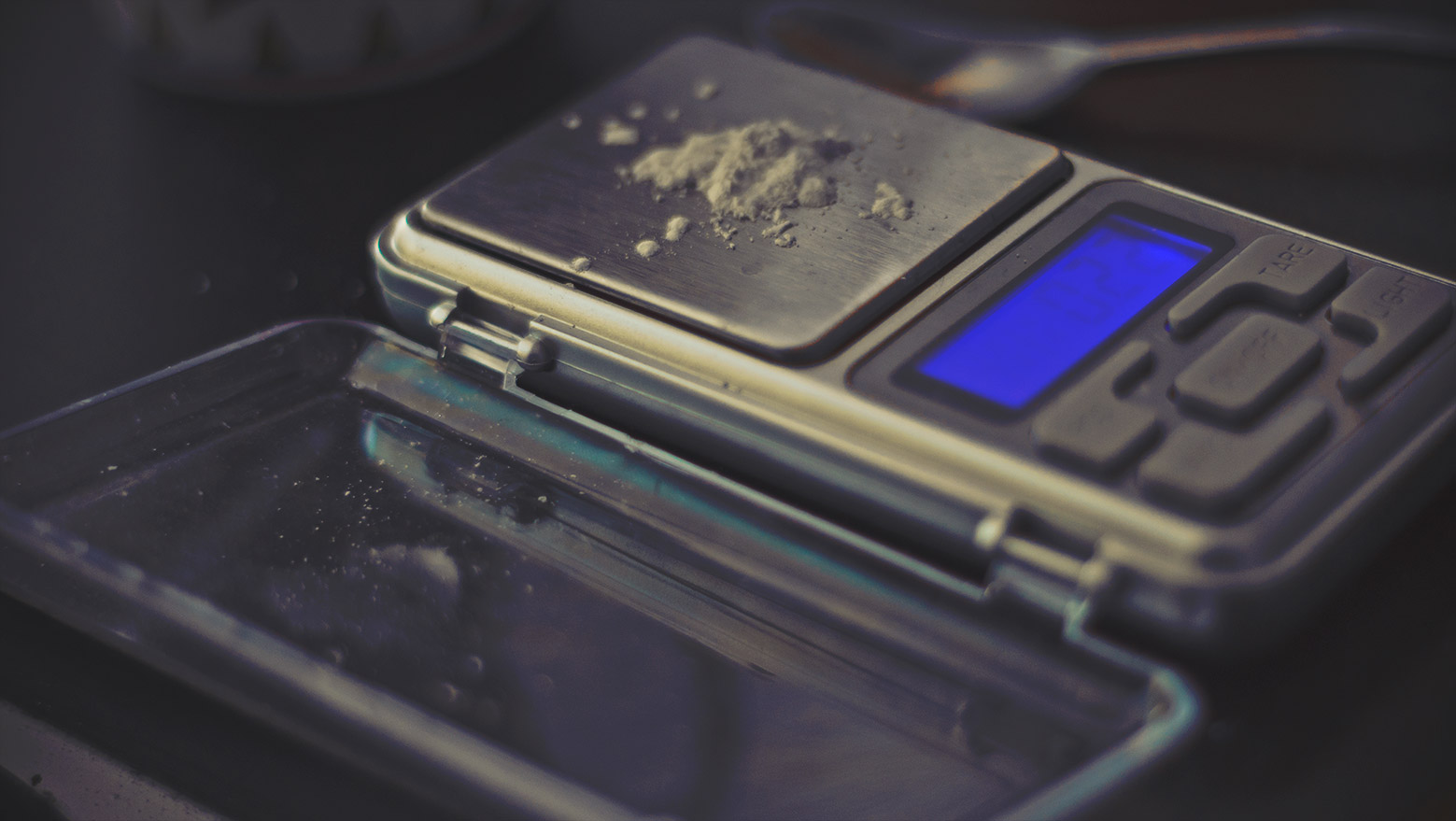
1/2 Supplementation on CKD - training
Now we get to the next big chunk of this feature writeup - surrounding supplementations. First up, surrounding training.
Preworkout
The most significant changes to my preworkout regiment this year; particularly from winter onwards - would simply be those surrounding No-Tropics. Otherwise, periodisations between black coffees and teas, with 3 to 5 grams of creatine monohydrate, and then up to 100mg of ALCAR remains as my "standard" stack.
Occassionally, I would also rely on either a baby aspirin (100mg or even just half) or a Coenzyme COQ10. Aspirin felt more required to me during hotter seasons than they do on colder seasons. If I am REALLY depressed or just having such an extremely tough of a day - I would take BOTH Aspirin and COQ10.
During winters I would also consider incorporating nitric oxide boosters. I am still to this day clinging on to my expired (yes, you heard that right one year expired) L-Arginine just fine and still alive to this day, or my recently acquired L-Citrulline mallate. Two Grams downed with the coffee stack usually suffice.
Intra-workout
I usually only bring my fluoride filtered water with some extra pinch of creatine monohydrate. Not a lot but just a pinch. I feel that this is somewhat helping me to at least maintain existing records reasonably well across all push and pull exercises. But other than that, the water fountain - is my only saving grace. On summers I could chug up to two and half whole litres of water within this training session alone; depending on length, intensity and overall difficulties of my entire day.
Postworkout
I am convinced that this year is the year of protein fluffs. First off, most (if not all) credit should be handed over to Martin Berkhan @ Leangains.com; him being I believe the sole inventor of Protein Fluffs. Seriously, this should have been patented a long time ago.
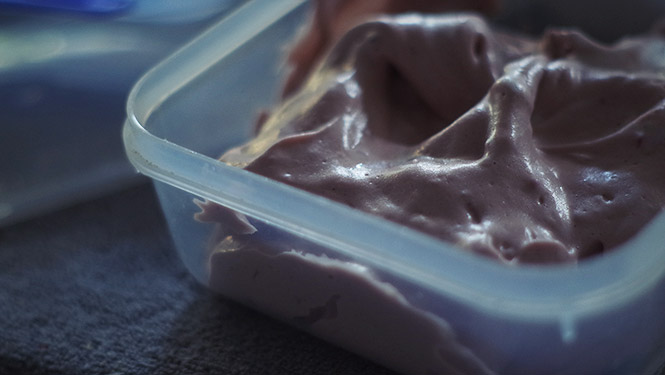
My postworkout regiment simply consists of downing 4 to 5 grams of unflavoured pea protein (yes, unflavoured) with another 80mg pinch of ALCAR on half glass of water. Few minutes later then, I will have my protein fluff which consists of the following:
- No more 12 grams of whey protein powder (equating to anywhere between 7-9 grams of protein content).
- 2 grams of Xanthan Gum.
- No more than 30 grams of DIY pumpkin puree.
- No more than 10 grams of frozen mixed berries.
I have recently been trying Guar Gum in place of Xanthan Gum with some success, if somewhat disappointingly lacking its volume when left for storage overtime. Also Guar Gum takes significantly longer for the entire mix to thicken up. Worse stilll - it doesnt retain its fluff at all if you store in the fridge as it turns back to liquid gunk in a matter of just one or two hours. I find that Guar Gum produces a more "warmer" or "velvety" taste than Xanthan's "cloudy" taste however, and this pretty much sums up the only advantage over Xanthan's.
I may yet to write another know-how post on these at a later date.
What I no longer take.
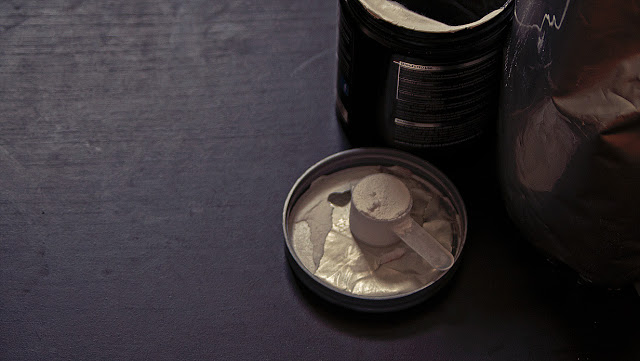
Commercial preworkouts.
All these glossy packaging filled with exotics like HMB, Gugula extract, Beta Alanines, Agmatine Sulfate, AAKG, high dose B12, Niacins, B complexes, Vitamin C, to name a few; still nevertheless remain feasible for use. But my bottom-line conclusion of them remain as more or less - a non-essential "novelty". Are they feasible therefore for use every single training day? That entirely depends on how affordable you think it is. And how reliant you feel or how convinced you are to these extra supps.
I have remained (to the best of my memory) completely free of such intake of commercial preworkouts for a good ten (10) straight months. Perhaps this is largely due to a self-discipline and abstinence; because quite frankly, they are quite expensive.
I no longer feel incentivised to use such preworkouts even during days where I am truly struggling and performing far below my previous records of all push, pull and lift exercises. I neither feel regretful nor I am ecstatically happy with or without glossy preworkouts.
If however some insists on taking or contemplate on taking them - consider supplement periodisations. Have three weeks to fully gorge yourself on supplements. Then compare yourself (in writing/journalling) for another three weeks without and try to perform to the same capacity.
BCAAS / Branched Chain Amino Acids
I have periodised on/off BCAAs short, mid and long periods throughout this year - with some clear pattern - that at least as per to my physiology - I believe I perform better without it.
There is some evidence for concerns surrounding their debilitating effects on brain chemistry. Leading to depressive-like symptoms. Whilst I may not feel exactly as terminally depressed; but I felt incredibly tired and sluggish on MANY more days whereby BCAAs are used as preworkout than those days I am WITHOUT BCAAs. Some studies even suggests its DETRIMENTAL, depressive effect on overall training performances.Indeed there were times whereby I felt so mentally exhausted, it took me literally almost two full minutes of recuperating between a lat pull down set to another.
More often than not, BCAAs gave me that endless "tunnel" vision. People may mistakenly think of this as a "benefit" as though it is interpreted likewise as a narrow-minded "focus". But my physiology interprets this as a tunnel-mindset that never seems to end as the "light" at the end of it all - seemingly gets further and further away from me.
Of course my opinion are my own experiences; and should never be taken as a rule. I recently read one study that seemingly suggests the opposite - people who have (existing) major depression have much LOWER circulating BCAAs than their control group. Irrespective; the final answer lies within the individual back to his/her willingness to periodise this and see if any beneficial effects arise upon using them.
2/2 Supplementation on CKD - General Days (SKD)
Next, here are my thoughts surrounding my usage of supplementation during weekdays.
The crucial. The essential.
Digestion Enzymes = Betaine HCL + Pepsin + optional others (papain, amylase, bromelain,etc).
I can honestly say; stomach acids + PEPSIN is the most indispensibly important and crucial supplement nobody talks about within any Ketogenic or LCHF interventions. From assisting mineral absorption to protein breakdown, they are convincingly inseparable to digestive health.
Vince Gironda may have died from heart disease. But his advice on betaine HCL's and his belief upon how proteins MUST be eaten separately away from carbohydrates - indeed sound interesting. Ever since I began using betaine HCL (with pepsin) or any other enzyematic formulae with at LEAST some given HCL somewhere within it, I felt incredibly relieved and almost free of any digestive upsets akin/mimics to those of mineral deficiencies - from heartburns, palpitations and general feeling of unease particularly during and after SKD meal/s.
The only cons and drawbacks however, are their periodical investment costings. If supplies run low; I must resort to dietary means eg. sauerkrauts and apple cider vinegars. I may yet to write another post exclusively on this at a later date.
For those who are new to taking Betaine HCLs, keep in mind that you must only take this in presence of first few bites of food; preferably those containing at least 15 grams worth of protein value. If the thought of seeing typical dosages anywhere between three to six tablets of Betaine HCLs per meal sounds unsettling; keep in mind that everybody varies in their state of HCL secretion. I find that I am only needing no more than two whole HCL + Pepsin tablets per meal (consisting 250MG betaine HCL + 50MG per dry tablet) .
The only times I feel the need to take LESS is during my re-feed days. This is where carbohydrates needs to do its course on a somewhat alkaline setting (though of course still open for debates). Although quite frankly, I feel somewhat better regardless with some digestive support irrespective of dietary and/or macro settings.
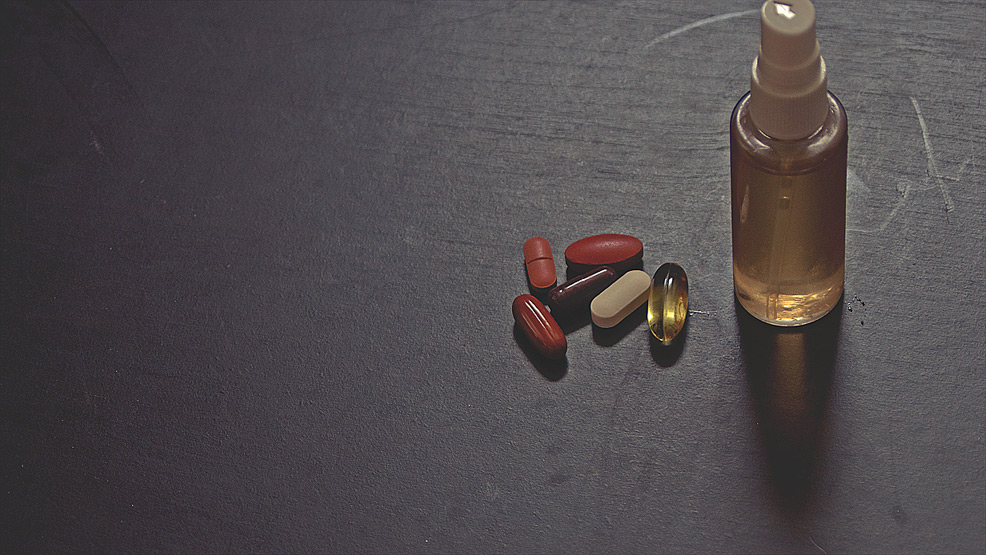
Magnesium, Zinc + potassium hack/s
It is a inconceivably difficult task for me to outline each and every one of their implications to (perhaps) all enzymatic reactions. You can safely bet that almost any biological, chemical, hormonal, methylation, polypeptide chains to singular amino-acid to then brain neurotransmitter pathways; and chances are, these three minerals are almost always inseparably involved somewhere in each pathway.
Without a doubt, nobody ever in their right mind should ignore the importance of these minerals. Beyond other trace minerals such as Copper and Iron, the most relevant at hand here on Ketogenic interventions are magnesium, zinc and potassium.
For magnesium intakes, besides from taking up to three whole tablets of my preferred magnesium citrate nonahydrates (or if I'm really broke at times - just Magnesium oxides + cheap chelate combo) I always start the day (after upon brushing the teeth) by applying my own DIY magnesium oil on torso and lower limbs. To make this oil get three cups of distilled water (about $2 per huge 2kg buckets from Woolies), bring to a boil, then turn off the heat, pour in two cups worth of magnesium chloride flakes and stir until dissolved. Cool to a reasonable enough temperature into spray bottles.
Zinc, is one that may need individualised separate intakes away from other minerals. As it interestingly may compete with the uptakes of calcium. Zinc is closely implicated also to Betaine HCL production; again an undisputed necessity. I usually take an ordinary chelated zinc (as it is the most affordable to me) during inbetween meals or at least an hour and half after meals. Even though chelated zinc (or especially zinc oxide) are poorly absorbable forms, it's still somewhat better than nothing. Although if you can afford it, go for Zinc picollinate.
Potassium perhaps is the most difficult to maintain optimal intake. My sources pretty much remains unchanged from dietary intakes of baby spinach, pumpkin purees (small amounts within carb tolerance) and plenty of turmeric. A "hack" I recently been slowly adopting is using a tiny pinch (no more than an edge of a knife) of CREAM OF TARTAR / Potassium Bitartrate into a warm glass of apple cider vinegar and sip that inbetween meals. This MUST be taken with caution however; that TOO MUCH potassium may also cause an electrolyte imbalance and will confusingly produce the same symptoms as TOO LITTLE. Consider rebalancing with (once again small amounts) of Sodium Bicarbonate / baking soda instead of cream of tartare.
Multivitamins, COQ10 (and others)
Believe it or not, it is increasingly difficult to find a multi vitamin without any suspecting sucrose, glucose, tablet/capsule additives (even gluten is found on CENTRUM® A-Z brands) added sneakily under the ingredients. My (only) available and affordable choice has remained static for almost one & half years - being the Natures Way multi-vitamin with Spirulina (200 tablets with pricing fluctuates between $9 all the way to $15). However, should there is none available in the shops; I would resort to at least rely on just some extra B-Complex formulas.
Despite ongoing incessant fears of our deficiency epidemic; Vitamin D is where I would advise proceeding with some caution. I for one to do not believe to seriously maintain a very high Vitamin D intakes all year around (INCLUDING hot summers) without its one reliant precursor for calcium mobilisations -the elusively important Vitamin K2. Unfortunately, supplemental K2 can be elitistly expensive. As for the Vitamin D itself; I take anywhere between at least two (but rarely no more than 3) tabs equating 2,000 to 3,000IU during hotter climates, but during winters is where I would emphasise anywhere up to 6,000IU a day. On almost all feature SKD meals - I always try to ensure that parsley (K1 variant) is used on my meals to help offset excess calcification, and not forgetting also - solid cheddar cheese intakes for their K2 variant.
Keto or not Keto - liver health is implicative to everything else of our physiological functioning. Far from being a detoxifier - don't forget also that the liver is a processing factory for all amino acids and glycogen + ketone utilisations. Milk thistle and organic sulfur MSM powders remains my go-to supplementary regiment. I am not entirely convinced over the wide spread / fear-mongering of Milk Thistle's estrogenic potential.
Co-enzyme COQ10 in my opinion and interpretation - is more of an preworkout as well as an anti-oxidant insurance. Vitamin E also is another one I'd consider supplementing daily to prevent excess LDL oxidations. One must take caution however that COQ10 is nonetheless a blood thickener; and it may seem wise to also balance this effect by consuming (natural) thinners to your meals - garlic and ginger - as essential condiments.
My intakes of Fish Oils are somewhat lower than expected. Anywhere between 2 to 4 capsules per day sums up my average intake.
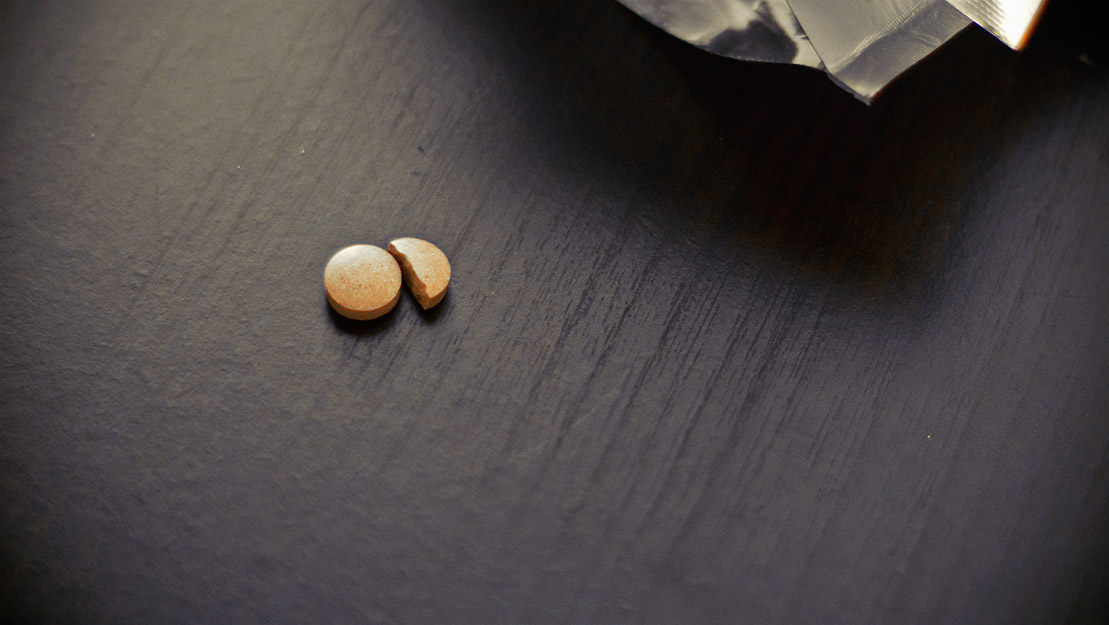
The (somewhat) conditionally-Essential/s.
Aspirin (low dose <200mg per day)
To date, there is no single medicine ever manufactured as elusively complicated; as the good old Aspirin. Here is a list of what Aspirin does. Beyond even just a mild inflammatory, an "insurance" against excess thickening of bloodflow or even an emergency pre-intervention on heart attacks,
To several noteable boost of libido (as suspected by its anti-cortisol and mild nitric oxide agonist), an anti-oxidant, a liver protectant, or even conducive roles for various cognitive illnesses. Other effects and potentials of Aspirin it seems; are still yet to be fully documented.
There is just one caveat; a big one that is still somewhat received under a lot of critics and concern. Stomach bleeding, GI fissures and all sorts of warnings mainly concerning all individuals with existing peptic ulcers. Some suspects that H.Pylori gut infection (which is a marker to peptic ulcers) plays a significant role to this adverse effect. However yet interestingly also; Aspirin LOWERS H.pylori gut bacteria.
What or where I stand in all of this is - to always remain self-aware over any of its effects via documenting, and most importantly - periodising between none, low and high - intakes. Particularly - careful attention when pairing with other blood-thinners, and to also consider keeping regular intakes of other coagulants (Vitamin K1 & 2 (YES, INCLUDING CHEESE) to keep overall blood thickness / viscosity in balance. Parsley, and/or kale should remains a regular part of your diet anyway and regardless within Ketogenic or not.
ALCAR
As I wrote on this previously, I do not mainly "worship" ALCAR conventionally by their reputation as weight loss; but rather - as an overall cognitive tonic or "NO-TROPIC". My intakes are liberal and few; if however still far less from clinical dosage settings beyond 800 or all the way even to 1,000 miligrams per day.
I still do not feel well if I'm taking it with heavy or large, feature meals. I do not even take it during my 48 hour Refeeding Windows. I prefer taking it inbetween long periods without foods; eg. such as coffees and teas. Stirred about 200mg dose (approx one/seventh of teaspoon) within black coffees with 2-3 grams of daily creatine always seem to work well for me without heartburn-like effects.
Whilst certainly not as cognitively-potent as the 98% L-DOPA extract; ALCAR at the very least provides that "up-and-go" decisiveness mentality. Of course, this is only generally mild. Yet still quite noticeable. Just don't expect this to be a NZT48, Modafinil or Adderal. "Hollywood" remains hollywood. Whereas Reality remains "real". (sighs).
Chromium Picollinate
Perhaps the newest supplement being widely perceived as insulin sensitisers; for promoting muscle glycogen uptake and as blood glucose disposal agents. I feel that so far this is one supplement next to Aspirin I find quite difficult for me to "relate" to; or for me giving my conclusive opinion over its efficacy and physiological suitability very long term. There has been much confusing debates on its alleged benefits on glucose controls and insulin sensitivity. Some clearly shows objective, beneficial results. Others vehemently; do not.
Where do I stand? I am somewhat finding it beneficial. Some days I feel much more responsive to glycogen uptake from protein intakes even during SKD. Though on some days I felt somewhat curiously hypoglycemic.
These are however - my only early thoughts of use in varied settings (both SKD days and CKD days) excluding elimination-use-periodisations. The dose it seems; determines its fate for either of two things - benefit or poison. Getting the right dosage to me and experience thus far seems to be the most difficult. I am still yet to this day finding whether up to 1,000 micrograms of Chromium Picollinate / CrPic(3) (equating to around 100 mg of Chromium) is as "good" as just 400 micrograms (equating around 40mg chromium). I may yet to write my thoughts on this once again at a later date.
Quite a lot of fear mongering however; persists within some studies asserting that prolonged intake damages the human DNA. A study done on hamsters did find some damage upon supplementation. One study however disagrees; as it would take far more copious amount than what human dosages would allow as reasonable limit/s (at least 2,000 micrograms per day or beyond).

Should you worry about cravings & "guilt"?
If I were asked forcibly - it'd be mainly from my experiences. As a prior skinny-fat, low-fat, no-calorie-tracking what-so-ever lifestyle can attest to is simply this - I can only say for myself - "No".
If there is one thing to worry about; I'd wager that it's less about you. Rather - it's your relativity and connected obligations to your relative as well as outside - social ecosystems. The biggest confounder that makes you feel guilty about such cravings? There is all but one word, one source for this causality.
Structural and Social - Coercions. That; I believe - goes as your source to blame and to worry about.
To be straight frank and honest to all readers - from January all the way to the writing of this article, My "unhealthiest" refeed meals I have attempted during my refeed protocols so far since then comes to a total of five (5) whole 10" cheap $3.50 AUD pizzas dipped in greek yoghurts. Four whole sponge jam rolls. and three (3) 12x splurges on cinnamon donuts. All that; in a space of TWELVE (12) months to this very day of hitting "Publish" this very article you see in front of you. Of course not including family weekend dinners. But that itself is as few once every one and half months on average. Even then, we always remain more or less moderate in all macro nutrient intakes across fats, carbs, proteins and fibres.
I got over it just fine. And in fact (or perhaps I should say on the basis of my physiological "interpretation") - I didn't even have such cravings again weeks or even month/s later on all those often-demonised things. Of course I cannot say of course whether the same will happen to you.
Here is one thing we can all do. Track all resource consumption. Cheat days or not Keto or not Eat your re-feed meals, satisfy your cravings. Journal. Track. get over it. Exercise, train hard, reflect, reconcile, reassess, challenge, revise and repeat.
The more you repeat this process, the more you exert a purpose towards revising your very own - resilience potentials.

End (Part 2/3).
That concludes our part 2 of this feature write up. Stay tuned for the next and final part for me discussing my thoughts surrounding the fruit / fibre intakes, as well as other questions surrounding Cyclical Ketogenic interventions.
